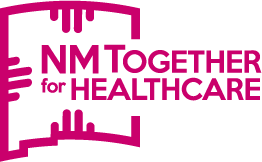By Colin Baillio of Health Action New Mexico and Ana Moran of United States of Care
Our furthest trip was to Lordsburg in southwest New Mexico, a town of 2,800 bordering Mexico and Arizona. In some ways the town is more connected to those communities than to its neighboring towns in New Mexico.
Lordsburg is one of New Mexico’s six Frontier Communities with less than one household per square mile. Its residents are far from healthcare, schools, grocery stores, and other basic necessities. Residents, with or without insurance, must travel for healthcare services in Deming or Silver City an hour or more away.
The town has an aging and declining population, and its sole nursing home shut down this summer, which housed 67 New Mexicans and employed 80. As you can imagine, it had a tremendous impact on the community. At our community meeting, Naomi Parra said her 92-year-old mother had been a resident at the center. Naomi had to quit her job to return home and take care of her.
Naomi joined other passionate community leaders who were encouraged and surprised to see our campaign visit. They don’t often have a seat at the table when it comes to healthcare policy. They want to see their community lead happy and healthy lives.
A faith leader, Pastor Joseph Hill, moved to the community to invest in its residents. He now leads efforts to make healthcare more geographically and economically equitable for rural and frontier communities in the southwest. He noted that the Affordable Care Act was a good step in alleviating some of the barriers to coverage.
When the ACA was implemented in 2014, coverage expanded for Lordsburg’s residents, most notably by expanding eligibility for New Mexico Medicaid programs. Yet, many who qualify haven’t enrolled–some think because of a lack of outreach and larger economic and systemic barriers, like limited broadband access.
People described the community’s difficulties in accessing care and not being able to afford the care that is available. Hidalgo Medical Services is the only facility in the county, a place where some residents can’t receive care because they lack insurance or are out-of-network.
People who receive in-home care, don’t receive quality care, because many of the providers often travel in from outside of the community making it difficult for them to invest the time to maintain consistency of care with their patients. Many people described having to forego or seek care in neighboring communities, and others travel south to Mexico to save money on prescriptions and dental care.
Beyond coverage options, they need an investment in their healthcare infrastructure and a localized healthcare workforce.


